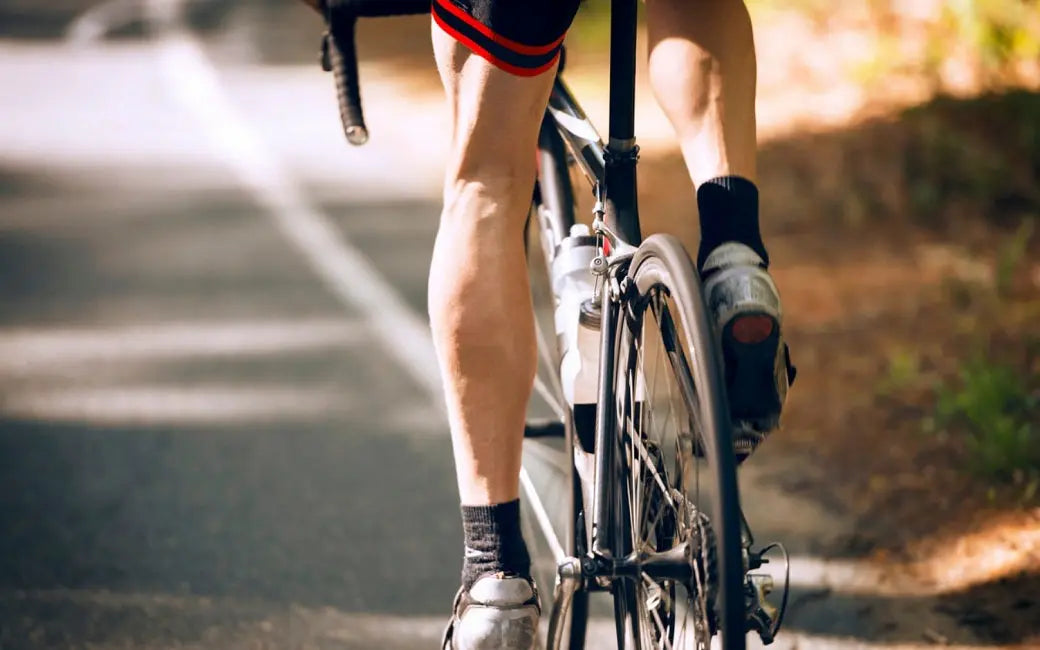
- by HOVSCO Official
How Do Bikes Help Arthritic Knees?
- by HOVSCO Official
Bikes help arthritic knees by providing low-impact exercise that reduces joint pain, increases mobility, and strengthens supporting muscles. Cycling lubricates joints, decreases stiffness, and helps manage weight-key factors in arthritis relief. Both outdoor and stationary bikes are effective, with HOVSCO models offering comfort and adaptability for those managing arthritic knees.
Cycling is a low-impact activity that minimizes stress on arthritic knees while promoting joint movement and flexibility. The repetitive pedaling motion encourages the production of synovial fluid, which lubricates the joint, reduces friction, and eases stiffness. Regular cycling also helps maintain a healthy weight, further reducing pressure on knee joints.
Chart: Key Benefits of Cycling for Arthritic Knees
| Benefit | Impact on Arthritic Knees |
|---|---|
| Low-impact exercise | Reduces joint stress and pain |
| Joint lubrication | Eases stiffness, improves mobility |
| Muscle strengthening | Supports and stabilizes the knee |
| Weight management | Lessens pressure on knee joints |
Multiple studies confirm that cycling, including stationary biking, relieves pain and improves function in people with knee osteoarthritis. Research shows that regular cycling reduces joint stiffness and enhances quality of life. One study found that lifelong cyclists had healthier knees and less pain than non-cyclists, reinforcing the value of biking for arthritis management.
Unlike running or jumping, biking does not subject the knees to jarring impacts. The smooth, circular motion of pedaling protects cartilage and ligaments, minimizing wear and tear. This makes cycling a safer, more sustainable exercise for those with arthritis, as it builds strength without aggravating joint damage.
Cycling increases the circulation of synovial fluid within the knee, which lubricates the joint and delivers nutrients to cartilage. This process reduces friction, eases pain, and supports cartilage health. The rhythmic movement of biking ensures joints are kept mobile, preventing the stiffness commonly associated with arthritis.
Strong muscles around the knee-especially the quadriceps, hamstrings, and calves-provide essential support and stability. Cycling helps build and maintain these muscles, reducing the load on arthritic joints and decreasing the risk of injury. Enhanced muscle strength also improves overall knee function and mobility.
Chart: Muscles Strengthened by Cycling
| Muscle Group | Role in Knee Support |
|---|---|
| Quadriceps | Stabilizes and extends knee |
| Hamstrings | Flexes knee, absorbs impact |
| Calves | Supports ankle and knee motion |
| Gluteals | Stabilizes hips and knees |
Both stationary and outdoor biking are effective for arthritic knees. Stationary bikes offer controlled resistance and a safe environment, ideal for those with balance concerns. Outdoor biking provides varied terrain and scenery, which can boost motivation and enjoyment. HOVSCO models are designed for comfort and adaptability, making them suitable for both indoor and outdoor use.
HOVSCO bikes are engineered with ergonomic frames, adjustable seats, and smooth pedal assist, ensuring comfort and ease of use for riders with arthritic knees. The HOVSCO Comfort Cruiser, Urban Glide, and All-Terrain models each offer unique features-like step-through frames and shock-absorbing components-making them top choices for arthritis sufferers seeking relief and mobility.
Start with low resistance and short sessions, gradually increasing intensity as comfort allows. Always warm up and stretch before cycling. Use proper bike fit and posture to avoid unnecessary strain. Consult a healthcare professional before beginning any new exercise routine, especially if you have severe arthritis or other health concerns.
When buying a bike for arthritic knees, prioritize comfort, adjustability, and ease of use. Look for features like step-through frames, padded seats, and pedal-assist technology. HOVSCO models are especially suited for arthritis relief, offering ergonomic designs and customizable settings. Test ride several models, ensure proper fit, and consider both indoor and outdoor options to maximize benefits and maintain motivation.
“Cycling is a game-changer for people with arthritic knees. At HOVSCO, we design bikes that prioritize comfort, support, and smooth motion-key factors for joint health. Our models, like the Comfort Cruiser and All-Terrain, are engineered to make cycling accessible and enjoyable for everyone, including those managing arthritis.”
How do bikes help arthritic knees?
Bikes help arthritic knees by providing low-impact exercise that lubricates joints, reduces pain, and strengthens supporting muscles, making movement easier and less painful.
Is cycling safe for people with severe knee arthritis?
Cycling is generally safe for most people with knee arthritis, but it’s best to consult a healthcare provider before starting, especially if you have severe symptoms or other health issues.
Which HOVSCO model is best for arthritic knees?
The HOVSCO Comfort Cruiser is highly recommended for arthritic knees, thanks to its ergonomic frame, adjustable seat, and smooth pedal assist.
Should I use a stationary bike or ride outdoors with arthritic knees?
Both options are beneficial-stationary bikes offer safety and control, while outdoor biking provides variety and enjoyment. Choose the option that best fits your comfort and lifestyle.
Share:
What Does It Cost to Charge an Electric Bike?
E-bike Insurance: Everything You Need to Know-Quick Answers
1 comment
Enjoyed your article it was informative thank you. 😊